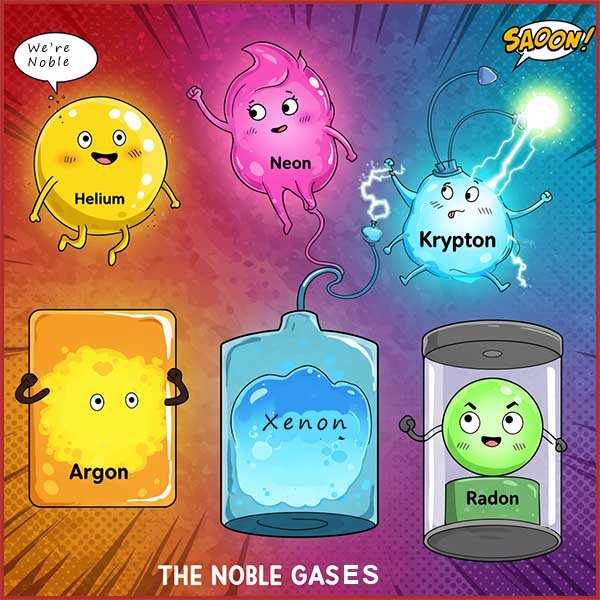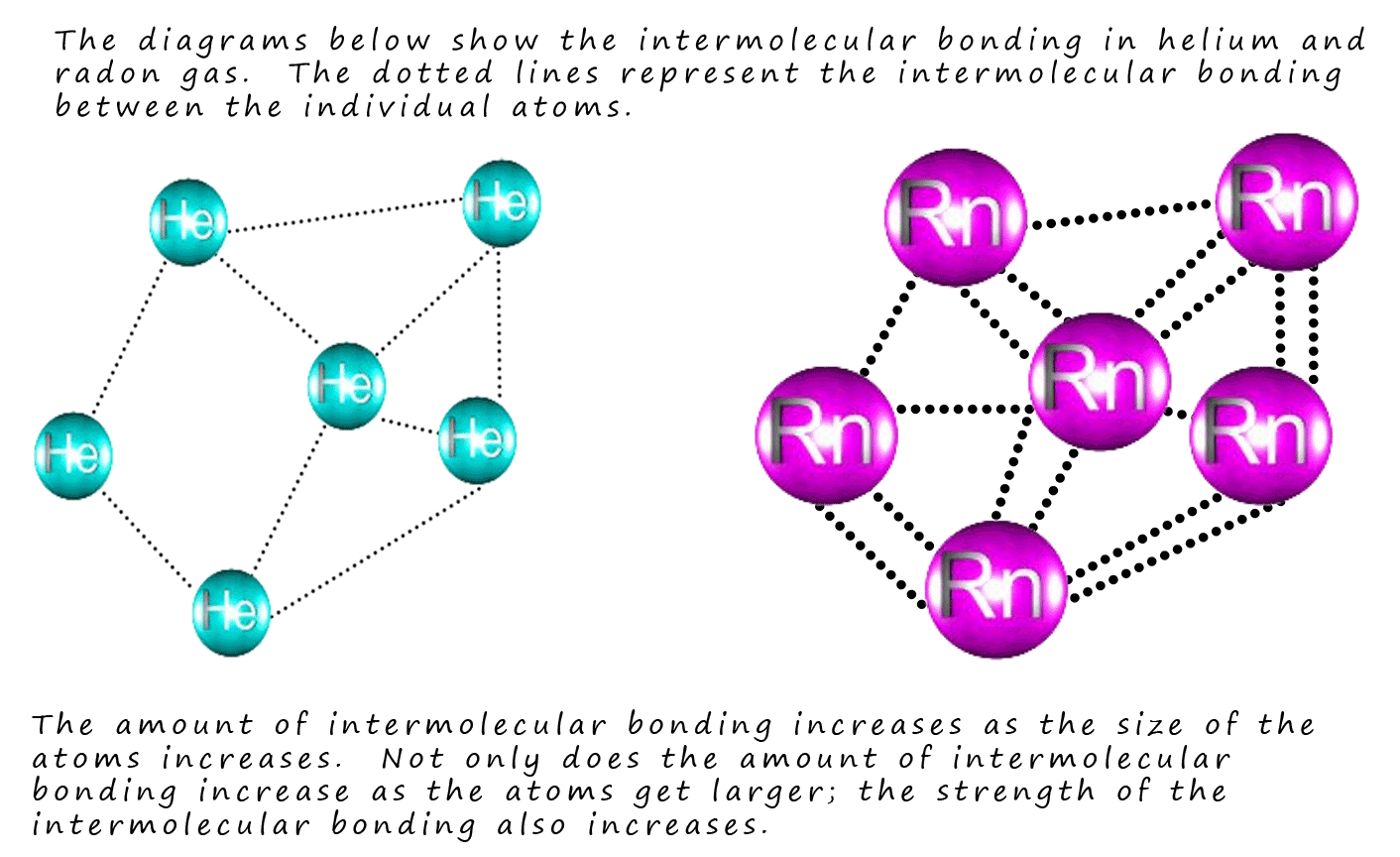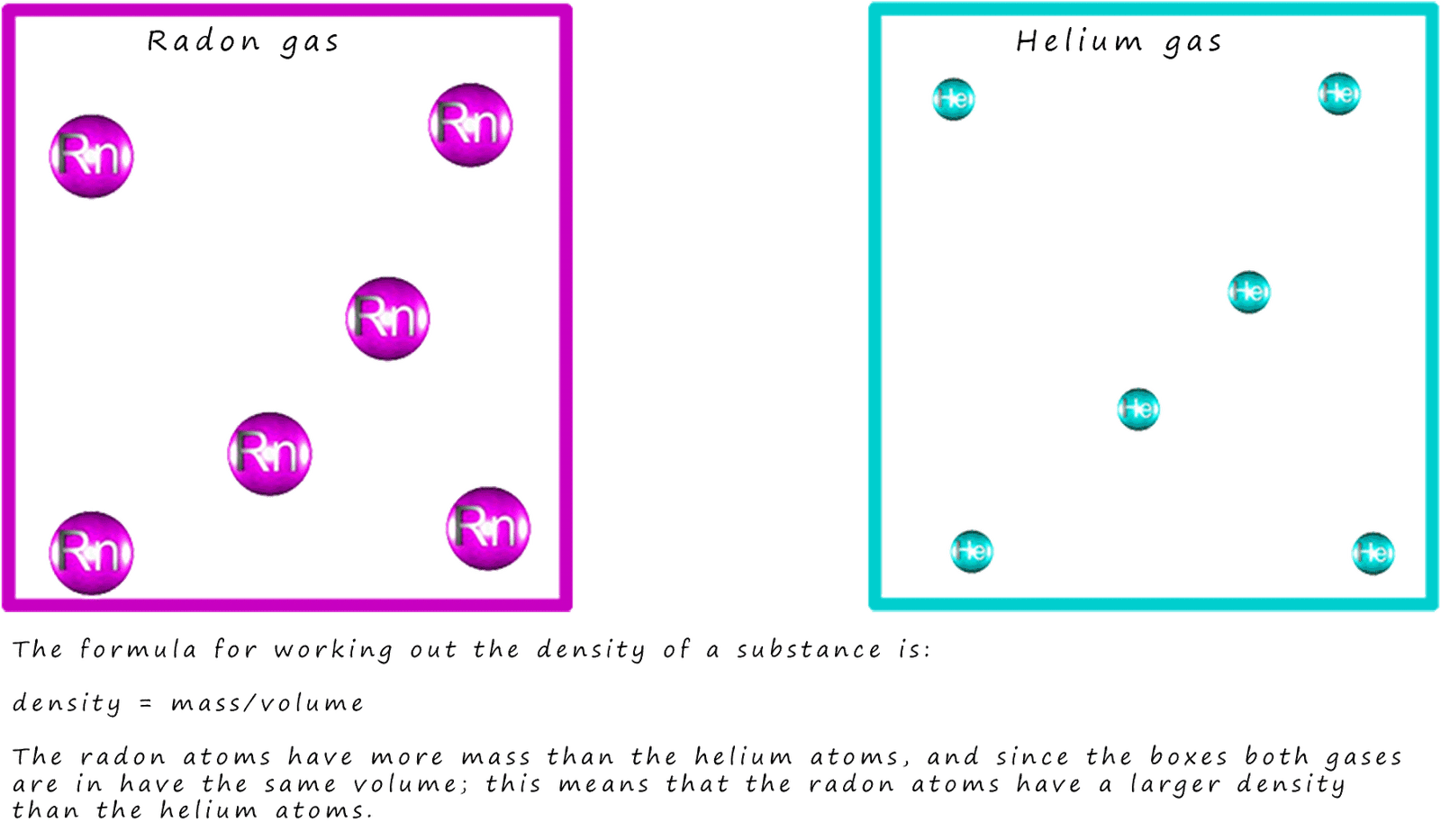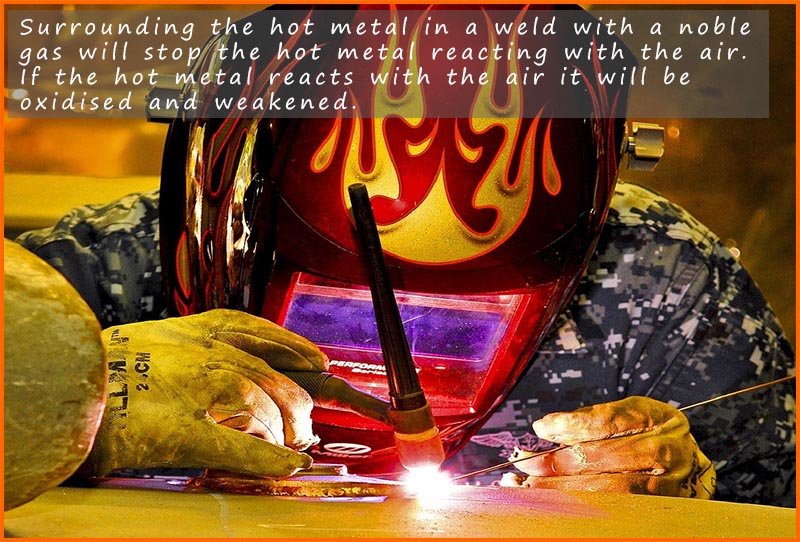

Higher and foundation tiers
The noble gases are found in the last column of the periodic table; group 0 (or sometimes it is called group 8 or group 18). The noble gases are helium, neon, argon, krypton, xenon and radon. Chemically they are very unexciting as they tend not to react with other elements; with the exception mainly of the halogen fluorine but even then severe conditions are needed and the compounds formed are not very stable- some even decompose explosively! So why don't the noble gases react? Well if you remember the "Octet rule" which states that elements will only react if they can achieve full outer electron shells and since all the noble gases already have full outer electron shells they have no reason to react with other elements.
Many of the non-metal elements consist diatomic molecules, that is molecules which contain only two atoms e.g. oxygen gas (O2), nitrogen gas (N2), hydrogen gas, (H2) and all the halogens : fluorine gas (F2), Chlorine gas (Cl2), Bromine (Br2), iodine (I2) all have a molecular structure. However the noble gases are different; since they are reluctant to react they go around as single atoms and NOT molecules. They are often called monatomic gases (mono = one) since they consist of individual atoms.

 Since there is no real chemistry to study for the noble gases as they rarely react, we can however use the
periodic table to predict trends in their physical properties e.g. trends in the melting points (m.p.), boiling
points (b.p.) and their densities.
Since there is no real chemistry to study for the noble gases as they rarely react, we can however use the
periodic table to predict trends in their physical properties e.g. trends in the melting points (m.p.), boiling
points (b.p.) and their densities.
Since the noble gases consist of individual atoms their melting and boiling points will be very low.
So what trend might we expect in the m.p. and b.p. as we go down group 0 from helium to radon? Well
as we go down the group the atomic mass increases so we might expect the heavier atoms to have the
highest melting and boiling points and this is exactly the trend we find. However this is not the
whole story.

The table below clearly shows the trend in the melting points (m.p.) and boiling points (b.p.) of the group 0 noble gases. You will notice that the melting and boiling points are very low; this is completely expected as noble gases consist of individual atoms with weak intermolecular forces between these small individual atoms.
| Noble gas | Helium (He) | Neon (Ne) | Argon (Ar) | Krypton (Kr) | Xenon (Xe) | Radon (Rn) |
|---|---|---|---|---|---|---|
| melting point/oC | -272 | -249 | -189 | -157 | -112 | -71 |
| boiling point/oC | -269 | -246 | -186 | -153 | -108 | -62 |
Density is how mass is inside a given volume. In the example below we have two gases; helium and radon inside two identical boxes. As you probably already know gases are mostly empty space. According to Avogadro's law equal volumes of gases will contain the same number of particles, in this case atoms. So the two identical boxes shown below obviously have the same volume and equal volumes of gases contain the same number of particles; so the boxes will contain the same number of atoms- obviously! Since radon atom are heavier than helium atoms the box with the radon atoms weighs more than the box with the helium atoms and since density is how mass is inside a given volume the radon gas is more dense than the helium gas.

The density of the noble gases increases as you descend group 0. This can be easily demonstrated by simply filling balloons with different noble gases and allowing them to either rise or fall. Helium being the least dense noble gas rise very quickly in air while radon being the most dense noble gas falls rapidly in air. This is shown in the image below:

 Having little or no chemistry the uses of the noble gases are limited. Most uses rely on the fact that the
noble
gases have almost no chemical reactivity e.g.
Light bulb filaments are made of the metal tungsten which glows white hot when the bulb is in
use. If the light bulb was simply filled with air then the filament would burn out almost as soon as
it was switched on. So filling the bulb with an inert noble gas like argon will prevents the filament
from burning out.
Having little or no chemistry the uses of the noble gases are limited. Most uses rely on the fact that the
noble
gases have almost no chemical reactivity e.g.
Light bulb filaments are made of the metal tungsten which glows white hot when the bulb is in
use. If the light bulb was simply filled with air then the filament would burn out almost as soon as
it was switched on. So filling the bulb with an inert noble gas like argon will prevents the filament
from burning out.

During welding a metal is heated well above its melting point and it can be easily
oxidised by reacting with oxygen in the air. This will weaken the metal and spoil the weld. So to
protect the hot metal during welding it is given a blanket of inert noble gas argon. Since argon is denser
than air and chemically unreactive it will keep out the oxygen and prevent the metal being oxidised.
Another use for argon gas is in argon lasers which are used in eye surgery and for creating holographs.
If neon gas is placed in a glass tube and a large enough voltage applied across it then the gas can be
made to emit light. These neon lights and signs are common on most high streets where they are used on
night clubs, restaurants, arcades and advertising signs.
Helium is mainly used in weather balloons and since its boiling point is so low, -2690C,
liquid helium is used to cool super-conducting magnets that hospital body scanners need to work
properly e.g. MRI scanners. The main use for krypton is to fill energy saving light bulbs and
in photography flashes.
Us ethe flashcards below to test your understanding of some of the main points on the properties and structure of the noble gases.



